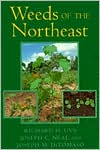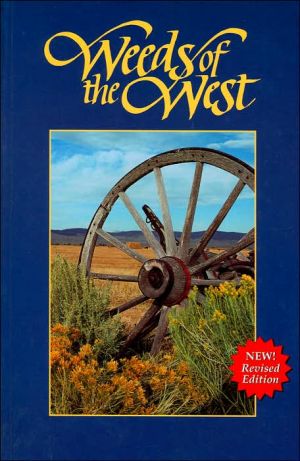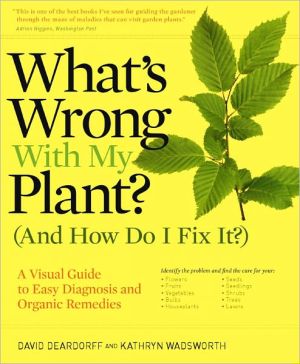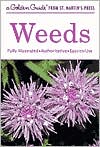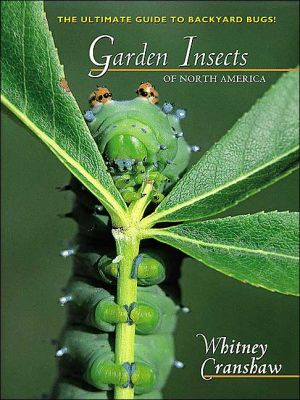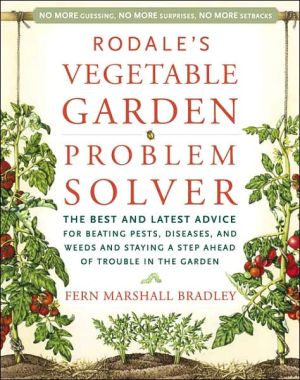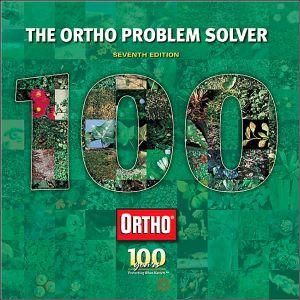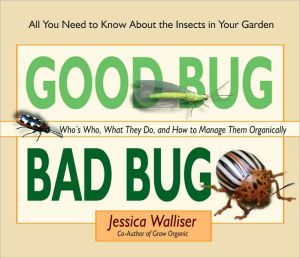Weeds of the Northeast
Here, at last, is a lavishly illustrated manual for ready identification of 299 common and economically important weeds in the region south to Virginia, north to Maine and southern Canada, and west to Wisconsin. Based on vegetative rather than floral characteristics, this practical guide gives anyone who works with plants the ability to identify weeds before they flower.*A dichotomous key to all the species described in the book is designed to narrow the choices to a few possible species....
Search in google:
Here, at last, is a lavishly illustrated manual for ready identification of 299 common and economically important weeds in the region south to Virginia, north to Maine and southern Canada, and west to Wisconsin. Based on vegetative rather than floral characteristics, this practical guide gives anyone who works with plants the ability to identify weeds before they flower.A dichotomous key to all the species described in the book is designed to narrow the choices to a few possible species. Identification can then be confirmed by reading the descriptions of the species and comparing a specimen with the drawings and photographs. A fold-out grass identification table provides diagnostic information for weedy grasses in an easy-to-use tabular key. Specimens with unusual vegetative characteristics, such as thorns, square stems, whorled leaves, or milky sap, can be rapidly identified using the shortcut identification table. The first comprehensive weed identification manual available for the Northeast, this book will facilitate appropriate weed management strategy in any horticultural or agronomic cropping system and will also serve home gardeners and landscape managers, as well as pest management specialists and allergists. Library Journal Brown (founder of the North American Native Orchid Journal) provides a guide to 71 orchid species and varieties found growing wild in New England, New York, and adjacent areas of New Jersey and Pennsylvania, with an emphasis on distribution and tips for locating flowering colonies. He describes several orchid "hotspots"e.g., The Northeast Kingdom (Vermont) and the Route 128 arc around Bostonincluding such unusual habitats as bogs and sand/gravel excavations near roads, which support certain orchid species. This book would be a natural for libraries in the region, but librarians may wish to compare it with William Chapman's Orchids of the Northeast (Syracuse Univ., 1996). Weeds of the Northeast is a more specialized reference to 298 species of weeds in agriculture, nurseries, gardens, turf areas, landscapes, and roadways. Entries detail the appearance of seedling and mature plants, flowers and fruits, habitat, distribution, and similar species. Special features include identification keys based on characteristics such as thorns, milky sap, and type of leaf; a dichotomous key to all described species; a grass identification table; and comparison tables for easily confused species. This book would certainly be valuable for identifying weeds in the region defined as Maine south to Virginia and west to Ohio and Wisconsin, but it does not provide guidance for controlling or eliminating them. Recommended for comprehensive gardening collections or botanical/agricultural libraries.Beth Clewis Crim, Prince William P.L., Va.
AcknowledgmentsAbout This Book1How to Identify a Weed4Shortcut Identification Tables5Vegetative Key to the Weeds9Spore Producers18Monocots24Dicots88Woody Plants326Hardwood Seedlings354Comparison Tables363Glossary375Bibliography385Index389About the Authors397
\ From the Publisher"This is a thorough and well-designed book that's been needed for a long time. The system of having both drawings and photographs accompanying the description of each plant will be of great help to amateur gardeners as well as to professional growers and horticulturists. The identification tables are also very useful."-Elisabeth Sheldon, author of A Proper Garden: On Perennials in the Border\ "Knowing your opponents is the first step in weed prevention. Weeds of the Northeast is businesslike and well photographed-a useful tool for the conscientious gardener."-Barbara Damrosch, author of The Garden Primer\ "I highly recommend Weeds of the Northeast if you ever happen to be in a masochistic mood and don't have a sharp stick handy with which to poke yourself in the eye. As I leafed through the pages, wincing at the depressingly clear color photographs, a horrible sense of familiarity set in. Ninety-nine percent of the weeds were in my garden. It was like looking at a family album of all your least favorite relatives. There was mean and scary Great-Aunt Margaret (Scotch thistle); passive-aggressive Cousin Isobel with the mustache (hairy bittercress); Uncle Ralph with the drinking problem and disgusting table manners (prostrate pigweed). Despite the feeling of nausea that gripped me, I was able to gather much useful information of a scientific sort. As Nietzsche said, that which doesn't kill me makes me stronger, and so I suppose my encounter with an army of unnaturally über-weeds could be looked at as an exercise in character-building."-Horticulture, Jan/Feb 2005\ "This impressive factual Weed Identification Manual, the first ever compiled of the Northeast, is thorough and well designed. . . . This is a distinctive book and reference guide on weeds, one that will be welcomed in a library, school, garden club, a gift for friends, and definitely a copy for yourself."-News of the Federated Garden Clubs of New York State\ "This detailed and user-friendly guide identifies nearly 300 weedy plant species commonly found from southeastern Canada south to Virginia and west to Wisconsin. Sharp color photographs illustrate each plant in seed, seedling, and mature stages. In addition, plants can be readily distinguished using an identification key based on vegetative characteristics such as leaf orientation, leaf shape, and presence or absence of hairs. A handy fold-out chart helps with identification of those tricky grasses. Weeds that can be identified easily by characteristics such as thorns or milky sap are listed in a series of 'shortcut' tables."-The American Gardener\ "The appeal of Weeds of the Northeast is broad, ranging from home gardeners to professional gold course managers to farmers. The book deserves a slot in the reference library."-American Reference Books Annual\ "Weeds of the Northeast is the first comprehensive weed identification manual available for the northeastern region of the U.S. . . . The manual will facilitate appropriate weed management strategies in horticultural or agronomic cropping systems and will also serve home gardeners, landscape managers, pest management specialists, and allergist."-Weed Technology\ "Lavishly illustrated and exceptionally well-done. . . . Here is a model to be emulated for California and other weedy areas of the United States and Canada."-Taxon 47\ \ \ \ \ \ Library JournalBrown (founder of the North American Native Orchid Journal) provides a guide to 71 orchid species and varieties found growing wild in New England, New York, and adjacent areas of New Jersey and Pennsylvania, with an emphasis on distribution and tips for locating flowering colonies. He describes several orchid "hotspots"e.g., The Northeast Kingdom (Vermont) and the Route 128 arc around Bostonincluding such unusual habitats as bogs and sand/gravel excavations near roads, which support certain orchid species. This book would be a natural for libraries in the region, but librarians may wish to compare it with William Chapman's Orchids of the Northeast (Syracuse Univ., 1996). Weeds of the Northeast is a more specialized reference to 298 species of weeds in agriculture, nurseries, gardens, turf areas, landscapes, and roadways. Entries detail the appearance of seedling and mature plants, flowers and fruits, habitat, distribution, and similar species. Special features include identification keys based on characteristics such as thorns, milky sap, and type of leaf; a dichotomous key to all described species; a grass identification table; and comparison tables for easily confused species. This book would certainly be valuable for identifying weeds in the region defined as Maine south to Virginia and west to Ohio and Wisconsin, but it does not provide guidance for controlling or eliminating them. Recommended for comprehensive gardening collections or botanical/agricultural libraries.Beth Clewis Crim, Prince William P.L., Va.\ \
